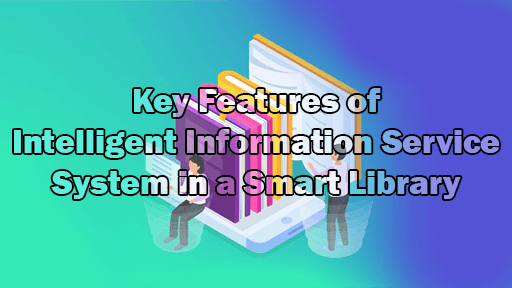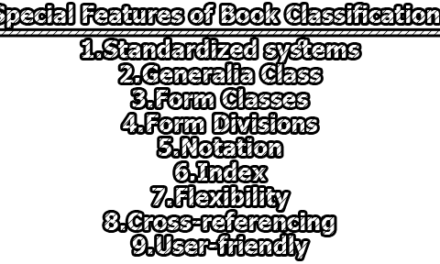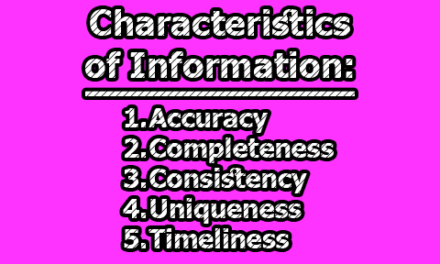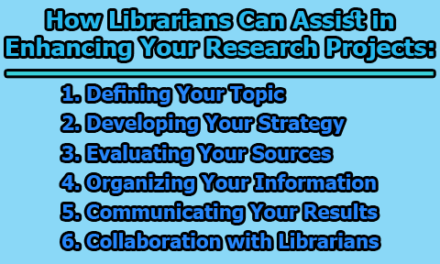Key Features of Intelligent Information Service System in a Smart Library:
In the ever-evolving landscape of information management, libraries play a crucial role in providing access to knowledge. The advent of technology has ushered in a new era for libraries, transforming them into Smart Libraries. The Intelligent Information Service System is at the forefront of this transformation, integrating cutting-edge technologies to enhance user experience, streamline operations, and redefine the concept of a traditional library. This system leverages artificial intelligence, data analytics, and automation to create a dynamic and responsive environment that caters to the diverse needs of patrons. In the rest of this article, we will explore the key features of intelligent information service system in a smart library.
- AI-Powered Search and Discovery:
- Advanced Algorithms: The system employs sophisticated natural language processing (NLP) algorithms and machine learning models to enhance the accuracy and efficiency of the search process. These algorithms continuously learn and adapt, ensuring improved search results over time.
- Contextual Understanding: Unlike traditional keyword-based searches, the AI-powered system understands user queries contextually. It takes into account factors such as user history, preferences, and the broader context of the search, providing more relevant and personalized results.
- Enhanced User Experience: By delivering precise and tailored search outcomes, the system significantly improves the overall user experience. Users can quickly find the information they need, promoting efficiency and satisfaction in their interactions with the library’s resources.
- User Profiling:
- Comprehensive User Profiles: The system creates detailed user profiles by analyzing user behavior, borrowing history, and reading preferences. This holistic understanding allows the system to cater to individual needs, making personalized recommendations and tailoring the library experience for each user.
- Behavioral Analysis: Through continuous monitoring and analysis of user interactions with the library system, the Intelligent Information Service System identifies patterns in borrowing habits, preferred genres, and frequently accessed materials. This data forms the basis for generating accurate user profiles.
- Targeted Recommendations: Leveraging user profiles, the system delivers targeted recommendations, suggesting books, articles, or other resources that align with the user’s interests. This feature enhances user engagement and encourages exploration of diverse materials.
- Data Analytics for Collection Management:
- Usage Patterns Analysis: The system employs data analytics tools to scrutinize usage patterns and trends among library users. This includes tracking popular genres, frequently borrowed items, and periods of high demand.
- Optimized Collection: Based on the insights gathered from data analytics, the library can make informed decisions regarding the expansion or reduction of its collection. This ensures that the library’s resources remain current, relevant, and aligned with the interests of its user community.
- Cost-Efficient Acquisitions: By understanding which materials are in high demand, the system aids in cost-efficient acquisitions, preventing unnecessary expenses on resources that may have limited utility. This strategic approach to collection management maximizes the library’s budgetary resources.
- Automated Check-in and Check-out:
- RFID Technology Integration: The system incorporates Radio-Frequency Identification (RFID) technology to automate the check-in and check-out processes. RFID tags on library materials facilitate quick and accurate identification without manual intervention.
- Queue Reduction: Automation significantly reduces wait times for patrons. The streamlined RFID-based transactions minimize queues at the circulation desk, contributing to a smoother and more efficient library experience for users.
- Error Minimization: Automation reduces the likelihood of human errors associated with manual check-in and check-out procedures. This enhances the overall reliability of library transactions, contributing to user trust and satisfaction.
- Virtual Reference Services:
- Real-Time Assistance: Virtual assistants and chatbots are integrated into the system to provide instant, real-time assistance to library users. These AI-driven services address queries promptly, eliminating the need for users to wait for human assistance.
- 24/7 Availability: Unlike traditional reference services with limited hours, virtual assistants operate 24/7, ensuring that users can access assistance at any time. This round-the-clock availability enhances the accessibility of library resources.
- Resource Guidance: Virtual assistants not only answer queries but also guide users through the library’s digital and physical resources. They can recommend relevant materials, provide navigation assistance, and offer information on library services, contributing to a more enriching user experience.
- Smart Space Management:
- IoT Sensor Integration: The system integrates Internet of Things (IoT) sensors throughout the library to monitor and collect real-time data on space utilization. These sensors track the occupancy of study areas, meeting rooms, and other facilities.
- Optimization Algorithms: By employing optimization algorithms, the system analyzes the data collected by IoT sensors to optimize the allocation of spaces. This ensures that users have access to comfortable and suitable study environments, contributing to a more user-friendly atmosphere.
- Dynamic Space Adaptation: The system dynamically adapts to changing usage patterns, allowing the library to respond to peak hours or special events. This flexibility ensures that space is utilized efficiently, maximizing the overall utility of the library’s physical resources.
- Digital Preservation:
- Robust Archiving Strategies: The system implements robust strategies for the digital preservation of resources within the library’s collection. This includes establishing secure backup systems, version control, and adherence to digital preservation standards.
- Long-Term Accessibility: Digital preservation measures aim to ensure the long-term accessibility and integrity of digital resources. By safeguarding against data loss or corruption, the system guarantees that users can access digital materials for years to come.
- Format Migration Capabilities: The system is equipped with the capability to migrate digital formats when necessary. This ensures compatibility with evolving technologies and file standards, preventing obsolescence and maintaining accessibility.
- Multi-Channel Access:
- Cross-Platform Compatibility: The system is designed to offer seamless access to library resources through multiple channels, including mobile applications, websites, and various social media platforms. This approach accommodates diverse user preferences and device usage patterns.
- Consistent User Experience: Regardless of the channel chosen, users experience a consistent and user-friendly interface. This ensures that users can transition seamlessly between platforms without compromising the quality of their interaction with library services.
- Integration with Third-Party Platforms: The system integrates with third-party platforms to expand its reach. This integration may include partnerships with educational platforms, content providers, and collaborative tools, offering users a broader spectrum of resources.
- Interactive Learning Platforms:
- Multimedia Integration: Collaborating with educational institutions, the system integrates multimedia elements into its learning platforms. This includes video lectures, interactive simulations, and other engaging content to enhance the educational experience.
- Collaborative Tools: The system provides collaborative tools within its learning platforms, allowing users to engage in group discussions, project work, and knowledge-sharing activities. This fosters a sense of community and collaborative learning.
- Adaptive Learning Modules: To accommodate diverse learning styles, the system incorporates adaptive learning modules. These modules tailor the learning experience based on user progress, ensuring an individualized and effective educational journey.
- E-Learning Integration:
- Strategic Partnerships: The system forms strategic partnerships with e-learning platforms, seamlessly integrating digital courses and educational content. This collaboration expands the library’s educational offerings and ensures a diverse range of learning resources.
- Unified Learning Environment: Users experience a unified learning environment where traditional library resources seamlessly coexist with digital courses. This integration promotes a holistic approach to education, allowing users to leverage both traditional and online learning materials.
- Progress Tracking and Certification: The system incorporates features for tracking user progress in e-learning courses and issuing certifications upon course completion. This enhances user motivation and provides tangible recognition for their educational achievements.
- Intelligent Recommendation Systems:
- Machine Learning Algorithms: The system employs advanced machine learning algorithms to analyze user behavior, preferences, and historical interactions with library resources.
- Real-Time Recommendations: Utilizing real-time data, the system generates intelligent and personalized recommendations for books, articles, or other materials based on user profiles and current interests.
- Adaptive Suggestions: Recommendations continuously adapt as users engage with the system, ensuring that suggested materials align with evolving preferences and expanding knowledge.
- Digital Accessibility:
- Inclusive Design: The system prioritizes inclusive design principles, ensuring that digital resources are accessible to users of all abilities.
- Assistive Technologies: Implements features such as text-to-speech, screen readers, and alternative formats to cater to users with visual or auditory impairments.
- User-Friendly Interfaces: Designs user interfaces with accessibility in mind, promoting an inclusive and equitable experience for all library patrons.
- Real-Time Inventory Management:
- Automated Tracking: Utilizes automation to track inventory levels in real-time, reducing the need for manual stocktaking and minimizing errors.
- Dynamic Updates: Automated systems ensure that the library’s catalog and online databases are instantly updated with the latest acquisitions, removals, and availability status.
- Efficient Resource Allocation: Enables the library to efficiently allocate resources, prioritize popular items, and respond quickly to changing demand.
- Community Engagement Platforms:
- Online Forums and Discussion Groups: Establishes virtual spaces such as online forums and discussion groups where library users can engage in conversations, share insights, and recommend resources.
- Collaborative Projects: Facilitates collaborative projects and activities within the community engagement platforms, encouraging users to work together on research, events, or shared interests.
- Knowledge-Sharing Initiatives: Promotes knowledge-sharing initiatives, allowing users to contribute their expertise and experiences to benefit the broader library community.
- Personalized Learning Plans:
- User-Driven Goal Setting: Assists users in setting educational goals and creating personalized learning plans based on their interests, skill levels, and aspirations.
- Progress Tracking: The system tracks user progress within their learning plans, providing insights into completed milestones and suggesting additional resources.
- Adaptive Recommendations: Continuously adapts learning plans based on user achievements and evolving educational objectives, ensuring a dynamic and tailored learning experience.
- Data Security and Privacy:
- Encryption Protocols: Implements robust encryption protocols to secure user data, ensuring the confidentiality of personal information and borrowing histories.
- Access Controls: Utilizes access controls and authentication mechanisms to restrict unauthorized access to sensitive information, promoting data security.
- Regular Audits: Conducts regular security audits to identify and address potential vulnerabilities, maintaining a proactive approach to data protection.
- Integration with Smart Devices:
- Seamless Connectivity: Enables seamless connectivity with a variety of smart devices, including smartphones, tablets, and wearables, allowing users to access library services from their preferred devices.
- Cross-Device Synchronization: Ensures synchronization of user data and preferences across different devices, providing a consistent and personalized experience regardless of the device used.
- IoT Integration: Leverages Internet of Things (IoT) devices for enhanced functionality, such as location-aware services or personalized notifications based on user proximity.
- Smart Notifications:
- Proactive Communication: Sends smart notifications to users regarding due dates, reservation availability, and important library updates, ensuring proactive communication.
- Personalized Alerts: Tailors notifications based on user preferences, ensuring that users receive relevant and timely information that aligns with their interests.
- Opt-In Settings: Allows users to customize their notification preferences, giving them control over the frequency and types of alerts they receive.
- Continuous System Upgrades:
- Agile Development Approach: Adopts an agile development approach to swiftly respond to changing user needs and technological advancements.
- Regular Updates: Provides regular updates and releases that introduce new features, improvements, and bug fixes, keeping the system current and aligned with emerging trends.
- User Feedback Integration: Actively seeks user feedback to identify areas for improvement, ensuring that system upgrades are driven by user preferences and requirements.
- User Training and Support:
- Comprehensive Training Programs: Offers comprehensive training programs to educate users about the functionalities of the Intelligent Information Service System, promoting effective utilization.
- User Manuals and Guides: Provides user-friendly manuals and guides, both in digital and print formats, to serve as references for users seeking assistance.
- Dedicated Support Channels: Establishes dedicated support channels, including help desks, online chat support, and user forums, to address user queries and troubleshoot issues promptly.
In conclusion, the Intelligent Information Service System of a Smart Library represents a paradigm shift in the way libraries operate. By harnessing the power of artificial intelligence, data analytics, and automation, this system not only enhances traditional library services but also opens up new possibilities for learning, collaboration, and community engagement. As we move forward in the digital age, the Smart Library becomes a dynamic hub of knowledge, seamlessly adapting to the evolving needs of its users and contributing significantly to the dissemination of information in an intelligent and efficient manner.

Assistant Teacher at Zinzira Pir Mohammad Pilot School and College










